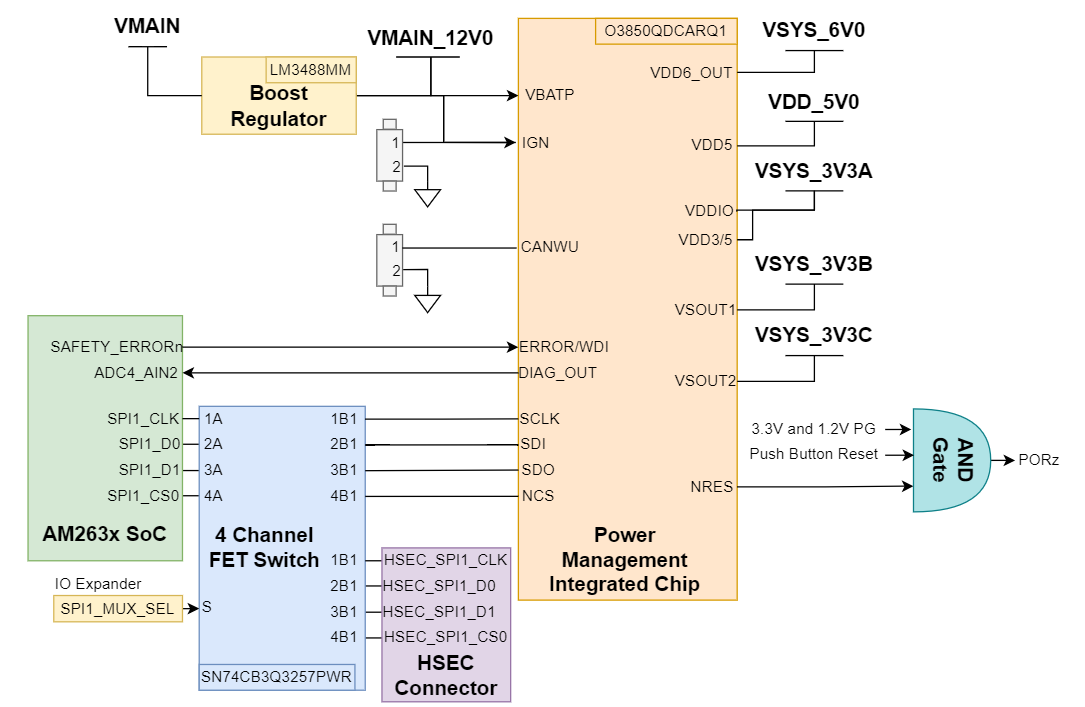SPRUJ93 august 2023
- 1
- Description
- Features
- 4
- 1Evaluation Module Overview
-
2Hardware
- 2.1 Functional Block Diagram
- 2.2 Component Identification
- 2.3 Power Requirements
- 2.4 Reset
- 2.5 Clock
- 2.6 Boot Mode Selection
- 2.7 JTAG Path Selection
- 2.8 Header Information
- 2.9 GPIO Mapping
- 2.10 Push Buttons
- 2.11 Test Points
- 2.12 Interfaces
- 2.13 HSEC Pinout and Pinmux Mapping
- 3Software
- 4Hardware Design Files
- 5Additional Information
- 6References
2.3.5 PMIC
The TMDSCNCD263-PMIC makes use of a Multirail Power Supply for Microcontrollers in Safety-Relevant Applications (TPS3850QDCARQ1). The PMIC integrates multiple supply rails to power the MCU, CAN, and other on-board peripherals.
 Figure 2-9 PMIC
Figure 2-9 PMICThe PMIC supports wake-up from an ignition signal (IGN) or wake-up from a CAN transceiver (CAN_WU).
An independent voltage monitoring unit inside the PMIC monitors undervoltage and overvoltage on all internal supply rails and regulator outputs of the battery supply. All supplies are protected with current limiting and overtemperature pre-warning and shutdown.
For more information about the PMIC and features, refer to the PMIC Data Sheet.